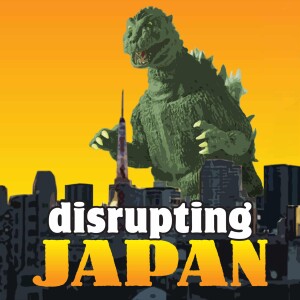
Disrupting Japan: Startups and Venture Capital in Japan
Business:Entrepreneurship

What today’s headlines don’t tell you about Fusion Energy
 2024-03-04
2024-03-04
Download
Right click and do "save link as"
Fusion energy promises almost unlimited, inexpensive, clean energy.
That's a pretty big promise.
Today we sit down with Satoshi Konishi, co-founder and CEO of Kyoto Fusioneering, and we talk about what it is really going to take to develop commercially viable fusion power and the role that startups have to play in that process.
We talk about the emerging public-private research partnerships, who is pulling ahead in the fusion race, and we dig into the long history and near future of fusion energy
It's a great conversation, and I think you'll enjoy it.
Show Notes
Why fusion energy is much older than you think
Why fusion energy dropped out of the news and why it’s back
How to raise venture capital for moonshot startups
The three core components to a fusion power that form Kyoto Fusioneering's business model
A strategy for standardizing when technology moves quickly
How recent fusion energy headlines have been misleading
Why we have a fusion energy startup cluster in Japan
The Japanese public attitude towards fusion
How the fusion industry will develop over the next five to ten years
The biggest misconception about fusion in Japan
One way to solve Japan’s deep tech scaling problem
Links from the Founder
Everything you ever wanted to know Kyoto Fusioneering
Connect with them on LinkedIn
Check out some videos of the experimental fusion equipment
Satoshi's ResearchGate page
Transcript
Welcome to Disrupting Japan. Straight Talk from Japan's most successful entrepreneurs.
I'm Tim Romero and thanks for joining me.
Today we're going to talk about fusion energy. Now, for the past several decades, fusion has been touted as the best possible solution to the world's energy needs. It's a promise of clean, safe, inexpensive, and virtually limitless energy.
So, what's not to love?
Of course, making that dream a reality is not exactly a simple matter. Today, we sit down with Satoshi Konishi, founder and CEO of Kyoto Fusioneering, and we talk about the state of fusion energy today, the problems that still need to be solved and the role that startups have to play in making fusion energy a commercial reality.
And if during our interview, it sounds like I'm sometimes kind of bubbling over in geeky excitement, well, it's because I am. Fusion energy is something that's fascinated me since I was in high school. It's just such an interesting and important set of technologies, and it's some genuinely cool physics as well.
Anyway, Satoshi and I dig into both the history of fusion power and the current challenges being faced by both universities and startups alike in bringing it to commercialization. Why the most viral headlines about fusion energy tend to be really misleading, what’s needed for more effective public private partnerships and fusion, and of course, we also dive into how Satoshi sees fusion energy developing over the next 10 years and the real trigger that will determine when and if we will see a world powered by fusion.
But, you know, Satoshi tells that story much better than I can. So, let's get right to the interview.
Interview
Tim: So, I am sitting here with Satoshi Konishi of Kyoto Fusioneering, who's working with researchers and startups around the world to make fusion energy a reality. So, thanks so much for sitting down with us.
Satoshi: I'm very happy to just talk with you. Thank you very much.
Tim: Well, it's my pleasure. And before we get deep into the fusion technology, my understanding is that Kyoto Fusion hearing's focus is on the materials and the precision engineering that are needed for fusion research.
Satoshi: Yeah, that is partially true, but what we intend to do ultimately is that to make the anti-fusion plant to make fusion energy. But what makes fusion energy well is not resource, but small amount hydrogen, but big machines very precisely made. So, when need special materials,
view more
More Episodes
Innovating by Asking for Help – Eiko Hashiba
 2015-03-30
2015-03-30
 2015-03-30
2015-03-30
Tea Ceremony in Blue Jeans & Startup Lessons
 2015-03-16
2015-03-16
 2015-03-16
2015-03-16
Japan’s Seeds of Disruption
 2015-01-19
2015-01-19
 2015-01-19
2015-01-19
Japan’s Coming Startup Boom
 2014-09-02
2014-09-02
 2014-09-02
2014-09-02
012345678910111213141516
Create your
podcast in
minutes
- Full-featured podcast site
- Unlimited storage and bandwidth
- Comprehensive podcast stats
- Distribute to Apple Podcasts, Spotify, and more
- Make money with your podcast
It is Free
- Privacy Policy
- Cookie Policy
- Terms of Use
- Consent Preferences
- Copyright © 2015-2024 Podbean.com




